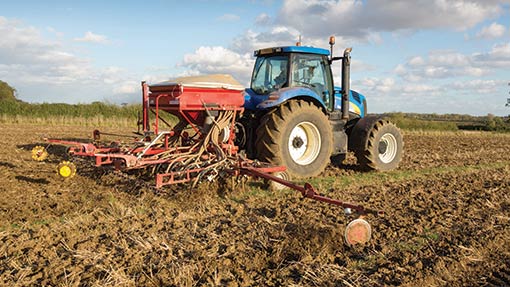New winter wheat varieties put pressure on old favourites

Winter wheat varieties Revelation, Crusoe and Skyfall look set to be the big winners this autumn as growers turn to those with good disease resistance after yellow rust and septoria hit crops this spring.
Other new varieties with good disease resistance scores such as Evolution, Leeds and Dickens are also seen to have made inroads into the winter wheat seed market, with growers keen to cut costs as grain prices slide.
The main losers seem likely to be Santiago and Kielder, which although yielding well, have struggled with disease this year and many growers see them as expensive to grow in terms of fungicide inputs.
David Waite, northern seeds manager at distribution group Frontier, says the “new kids on the block” have eaten into the share of the more established winter wheat varieties.
“We’ve seen colossal disease pressure, with some of the differences in treated and untreated trials being up to 4t/ha, so the importance of a good disease package is crucial,” he says.
See also: Oilseed rape set for lowest area in four years
Barry Barker, national arable seeds product manager at distributor Agrii, expects these newer varieties to put pressure on Santiago and Kielder, which have low resistance scores to yellow rust.
“We expect Revelation, Crusoe and Skyfall to be the big winners this year, followed by Evolution, Leeds and Dickens,” he says.
Mr Barker expects Diego to still be the top variety, with Santiago just staying in second place, closely followed by Revelation and Crusoe in fourth. Evolution, Relay and Leeds will all be vying for the next positions.
This compares with last season’s top six of Diego at 16.7%, Santiago at 10.9% followed by Kielder at 5.6% and then a cluster of varieties such as Relay, Grafton, Crusoe and Cordiale.
The new breadmaking variety Skyfall has sold well this season, especially in the east of the country, and will be a strong competitor for Crusoe in the milling sector, Mr Barker adds.
Lee Bennett, national seeds manager at farm co-operative Openfield, says many growers see the feed wheat variety Santiago as a high-input variety and are not as willing to invest in it this year.
“It is not great on yellow rust, which has been a big concern for growers in the season just gone,” he says.
With both Crusoe and Skyfall selling well in the breadmaking sector, other milling varieties such as Solstice and Gallant have lost popularity due to their lower yields and disease resistance scores.
“With prices so low, growers are looking to get any premium they can from varieties, without sacrificing too much yield,” says Mr Bennett.
Feed wheat prices have slipped about £50/t from the beginning of the year down to close to £100/t, pressured by bumper grain harvests around the world. The UK wheat crop is expected to exceed 16m tonnes.
The winter wheat area being drilled this autumn is expected to be similar to the 1.96m hectares sown last season, while there is likely to have been a small rise in home-saved seed used this year.

